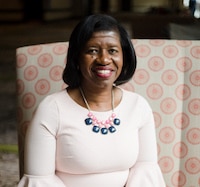It's time to reimagine what's possible for your agency's culture by way of diversity, equity, and inclusion– that's so easy to say but intensely hard to reimagine. You've gotten the green light to start the very first diversity and inclusion initiatives within your agency. You're elated there is so much to do, there's so much impact you want to make, so where do you start?
As a task-oriented person who feels you should make a list of everything on your plate, you set out to evaluate the landscape and built a to-do list. This is what you came up with: pandemic remote working, social justice demands, lack of belonging, disengaged employees, changing demographics, evolving customer base, and a gaping hole in the talent pipeline! Whew, with this list, how do you even begin to define success while building inclusion capacity?
I'd start by taking a deep breath!
To move the needle forward, let's start by answering three critical and actionable questions:
First, as an organization, how do you define inclusion?
We could describe inclusion as the ultimate invitation to the private party – a neat way of wrapping a bow around inclusion. Inclusion is the ultimate invitation to the party – who gets the invite, who doesn't, and who will never get the prime invitation?
For example, when employees join your agency, the value of inclusion becomes more evident. If I'm the new kid on the block, will I get an invitation to the party and have full acceptance when I arrive? Sometimes when we attempt to build inclusion capacity for our leaders, the lens of inclusion has to be removed from the textbook and applied based on factual circumstances our leaders will face. In this instance, who will not get an invitation to the party, and who will get an invitation in hopes they won't accept it?
Everything starts with the definition. We cannot get into the work of diversity before we fully understand the organization's psyche around inclusion. Can we be deliberately inclusive in every area of this agency? Behind the walls of the company, what is the definition of inclusion? Does everyone agree on the definition? Who are your holdouts, and what long-term impact will they have on your success list?
Lesson One: We cannot fix what we cannot define.
Second, what are we holding onto and why?
Within every organization, there is a resistance to change. Change is the hardest thing you'll ever do, even though as leaders, we think, if we invent new policies and roll out our latest initiatives, everyone will drink the iced tea. The reality, it's never going to happen.
The shifting sands of a post-pandemic world demand that we answer this bold question. What parts of your organization will never be inclusive even if you try? It's straightforward to answer the question, but we rarely ask it.
Change must be viewed through the lens of transition. How do we transition individuals who resist, for example, hiring women, or those who find every excuse not to fully embrace diversity initiatives, to become champions of your diversity and inclusion process? If we're inclusive, even the naysayers get to be included.
Lesson Two: Understanding the dynamics of change means we must transition our thought process.
Finally, what is your tomorrow today?
Inclusion capacity building doesn't have a long-tail, long-winded blueprint. When we think about capacity, what can you accomplish today that may be on our list for tomorrow. This is not tackling the low-hanging fruit and quick wins. The definition of tomorrow today is, what is the hardest part of implementing your diversity and inclusion initiatives that you plan to put off until tomorrow? Why not start working on that today?
The reality is organizations that pick the easy wins are meerly delaying addressing the challenging tasks of building leadership capacity. Most agencies think putting out buzzworthy diversity statements, and connecting with Historically Black Colleges and Universities (HBCUs) will ultimately create the building blocks of inclusive capacity. I'm here to tell you that until you peel the onion and have tears in your eyes, inclusion capacity will never be built.
Lesson Three: We cannot put off the hard work while settling for the quick wins.
Inclusion is hard work. Building inclusion capacity means we tackle the tomorrow task today. Peel the onion and address the underlying issues that may delay progress.
 Meet Margaret Spence
Meet Margaret Spence
CEO and Founder of the Inclusion Learning Lab
For twenty-two years, Margaret has led the business-advisory firm, C. Douglas & Associates, as their CEO. The firm specializes in human resources compliance, talent development, diversity and inclusion, and women's leadership development. With more than thirty-six years in the insurance industry, Margaret has a demonstrated understanding of the industry. She understands that the most significant issue for the industry is long-term talent development. Her focus making the insurance industry leadership and ranks more diverse while attracting younger employees to the industry.
The Inclusion Learning Lab drives change through advocacy, education, research, community, and action to solve the greatest challenge of our time – creating a more inclusive work environment. We help organizations create deliberately inclusive workplaces because diversity wins when inclusion is elevated.
Visit our website – www.InclusionLearningLab.com